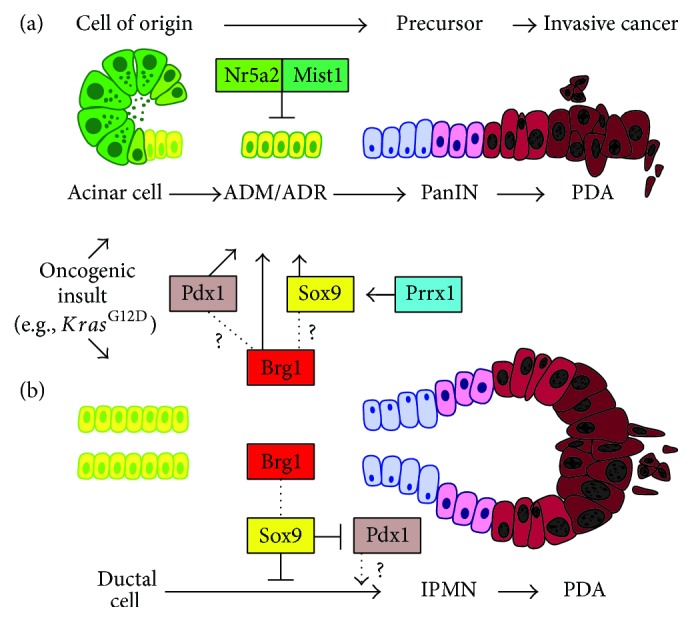Figure 1.

A model for developmental factors regulating acinar and duct cell transformation. (a) Acinar cells undergo acinar to ductal reprogramming (ADM/ADR) on their way to become PanINs and PDA. The ductal reprogramming of acinar cells is inhibited by factors that maintain stable acinar differentiation, such as Mist1 and Nr5a2. Instead, the transcription factors Sox9 and Pdx1 promote ductal reprogramming. Prrx1 and the chromatin remodeler Brg1 also promote ductal reprogramming, possibly by regulating other transcription factors, such as Sox9 or Pdx1. (b) Ductal cells transform into IPMN lesions by undergoing a dedifferentiation step (“ductal retrogression”) evidenced by an upregulation of the progenitor marker Pdx1. The chromatin remodeler Brg1 suppresses ductal retrogression by regulating Sox9 expression, which in turn inhibits Pdx1. This points to an opposing function of Brg1 in acinar versus duct cell transformation.
